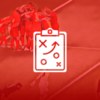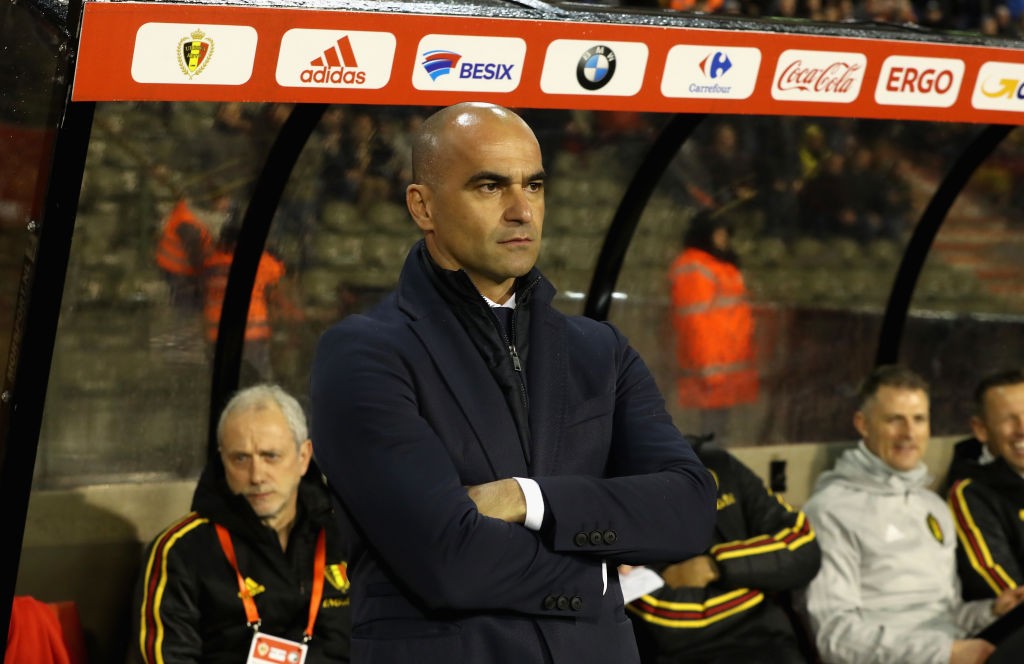Andrew Thompson is on the spot again, looking at the mixed group stage Belgium had in Euro 2016, and what they might have learned from it.

Belgium’s “Golden Generation” was the subject of much debate in the run up to Euro 2016. Marc Wilmots’ troops, brimming with confidence and blessed with ability and experience at the highest level throughout the side, were touted as one of the favorites to make a deep run in France this summer, with the likes of captain Eden Hazard and Kevin De Bruyne amongst the most highly prized attacking assets in Europe at club level. Unfortunately for De Rode Duivels, they were second class to an Italian masterclass performance and a throwback to traditional staunch defensive football that saw the Azzurri run out 2-0 winners at the Stade de Lyon on match-day one of the group stage.
It was an underwhelming and downright disappointing performance from a Belgian side who so many tipped for great things, and early warning signs pointed to a failed campaign if things didn’t change and quickly on the tactics board. Where did it all go wrong initially for Belgium and how has it been corrected? Let’s take a look.
Against Italy without freedom
The notion of Wilmots selecting Marouane Fellaini, traditionally a central midfielder, to play just behind center-forward Romelu Lukaku in the attacking hole, cannot be defended, but the logic could potentially be seen. Italy undoubtedly would come out defensive (and they did), and Fellaini would be another option with which Belgium could hold up play as to not isolate Lukaku upfront against the Juventus-based Italian defense. While in theory it was a sound plan, in practicality and from a tactical standpoint, it was an absolute disaster.
Not being the most mobile player available to say the least, Fellaini ended up being nothing more than a barrier between Eden Hazard and Kevin de Bruyne (never mind the fact that he constantly occupied the same spaces where Lukaku likes to operate), especially the latter of the two, who more often than not was isolated down the right-hand side and unable to truly get into the match and put his personal stamp in the attacking third of the pitch. Furthermore, there was a real genuine lack of movement and fluidity going forward for the Belgians, and even though some chances were created later on in the match, Italy dealt with the Wilmots offensive scheme quite comfortably.
All told, over the course of ninety minutes, neither Lukaku, Hazard, De Bruyne or second-half substitute Yannick Carrasco could combine their play with one another. All of these players passed to a defensive option more so than an attacking one, with Lukaku, De Bruyne and Fellaini finding makeshift right-back Laurent Ciman more than any other player (showing an overreliance of trying to force the right flank given De Bruyne’s deployment there), while Hazard and Carrasco had to opt for Jan Vertonghen and Toby Alderweireld more than any other passing option.
Additional stat analysis reveals that, despite having the lion’s share of possession (56%), more completed passes over the course of ninety minutes (445 compared to Italy’s 320) and nearly triple the amount of passes in the attacking third that Italy could muster (140 compared to 58), Belgium only managed two more passes inside the penalty area, a ratio that falls far below the Italian equivalent, and further evidence that shows Belgium’s lack of movement and attacking in isolation is tied directly to the improper of key players both from a positional standpoint and tactically, mainly De Bruyne. If that isn’t enough, the hammer stroke on the anvil comes by way of the fact that Alderweireld, Vermaelen and Ciman completed more passes than any other Belgian player – in a word, terrible.
While numbers cannot be the end all be all in an argument, this further proves that not only was there a genuine lack of regular available options in the attacking third, but that Belgium spent far more time passing laterally and backwards than into forward areas – it was always going to be easy for Italy against a side who isolated their craftsman and lacked tactical fluidity. But changes were made and issues were addressed…
Improvement against Ireland and Sweden
The result against Italy could have set Belgium on a collision course with utter failure, but the response shown against Ireland and then in the final group stage outing against Zlatan’s Sweden put them back on track.
Two immediate changes in the starting XI already put Belgium in a better place tactically, with Carrasco positioned on the right De Bruyne through the middle and Fellaini dropped to the bench, while a traditional right-back in Thomas Meunier replaced the out of sorts Ciman – it’s the blueprint that Belgium should have gone with since the first match, and their performance in this set-up paid dividends.
The most important byproduct of the lineup change was much more fluidity and interchangeability between the attacking three behind Lukaku. Both Hazard and De Bruyne would constantly swap positions based off who was the focal point of the attack, with Hazard tucking in centrally when in possession to open up space for De Bruyne or Lukaku to move into. As for De Bruyne, he would constantly drift into either channel while utilizing the runs from not just his wide options, but the proper support of the full-backs, especially Meunier. The end result was a much more dynamic Belgium attack, that while still comfortable on the ball and in possession, could switch gears effectively and spring on the counter, reflected by both of Lukaku’s goals against Ireland coming off the break.
Even though the win over Ireland was by a further two goal margin, the same trend continued against Sweden, with Belgium still looking far more dangerous in the attack than they had in their first performance of the group stage. While the main defensive components in Alderweireld, Vertonghen and Ciman were the main sources of distribution against Italy, the correct centers of creativity were finally able to show themselves in the performances that followed. Against Ireland, Lukaku and De Bruyne received the ball from Hazard more times than any other player, while Hazard and Carrasco could thank De Bruyne for his supply as he can be credited for being their source of service.
This trend continued into the Sweden match, with Hazard again supplying Lukaku and De Bruyne more than any other player, and De Bruyne again in turn doing the same for Hazard and Carrasco. Much like Ciman against Italy, Meunier at right-back still saw plenty of the ball, but instead of it being in a defensive posture, Meunier was constantly pushing forward to provide additional service for the Belgian attack, which resulted in his assist for Axel Witsel’s headed effort against Sweden with an expertly placed ball into the area from the run of play. All in all, it was a much more fluid, incisive, intelligent and balanced showing from a gifted team who weren’t given true freedom in their opening joust of the tournament.
Moving Forward
A date with surprise package Hungary beckons on the horizon for Belgium, a fixture that they cannot go into assuming the tie has been decided before a single ball has been kicked. With Hungary’s workman-like style of play and ability to hit their opponents on the break just as well as anyone this tournament (after all, they’re joint top for goals scored thus far with six), Marc Wilmots will have to continue to put faith in the system that saw them take six points out of six after their poor result against Antonio Conte’s troops.
The key for Belgium, and indeed for so many other sides this tournament, is to utilize the right players in the right tactical deployment that maximizes their strengths while trying to nullify their weaknesses as much as possible. With the brilliant play of Kevin De Bruyne and Eden Hazard, Belgium have an attacking duo as good as any this summer, which supplies a striker in Romelu Lukaku who is one of the hottest properties in world football. But it’s past these wonderful attacking options that Wilmots must continue to get the balance correct. Continued faith in Yannick Carrasco, or even Dries Mertens to occupy the right hand side is paramount to their overall success, while the midfield duo of Radja Nainggolan and Axel Witsel provides the right amount of defensive shielding combined with box-to-box play. As for their defense, he cannot look past the continued inclusion of Thomas Meunier, who’s play from the right side of the back four has been as important as any other piece of the Belgian puzzle.
I stated before this tournament that Belgium would need top class performances from KDB and Hazard, and thus far the proof has been in the eating of the pudding – when they’re on song, Belgium are laughing, but then they are hampered and taken away the freedom that they need to be genuinely menacing going forward, Belgium will surely struggle…but it’s the understanding that how the team is deployed in all areas of the pitch that is most important, and how that can either positively or negatively affect the talismanic attacking midfielders. Wilmots possesses the answers to the riddle, he just has to continue to put faith in them.
Written by Andrew Thompson
- 20 Key Young Players to Watch from 20 Premier League Teams - August 10, 2018
- World Cup 2018: Germany Warning Signs - June 20, 2018
- MLS 2017: Top 5 U-22 Players of the Season - December 6, 2017
























































